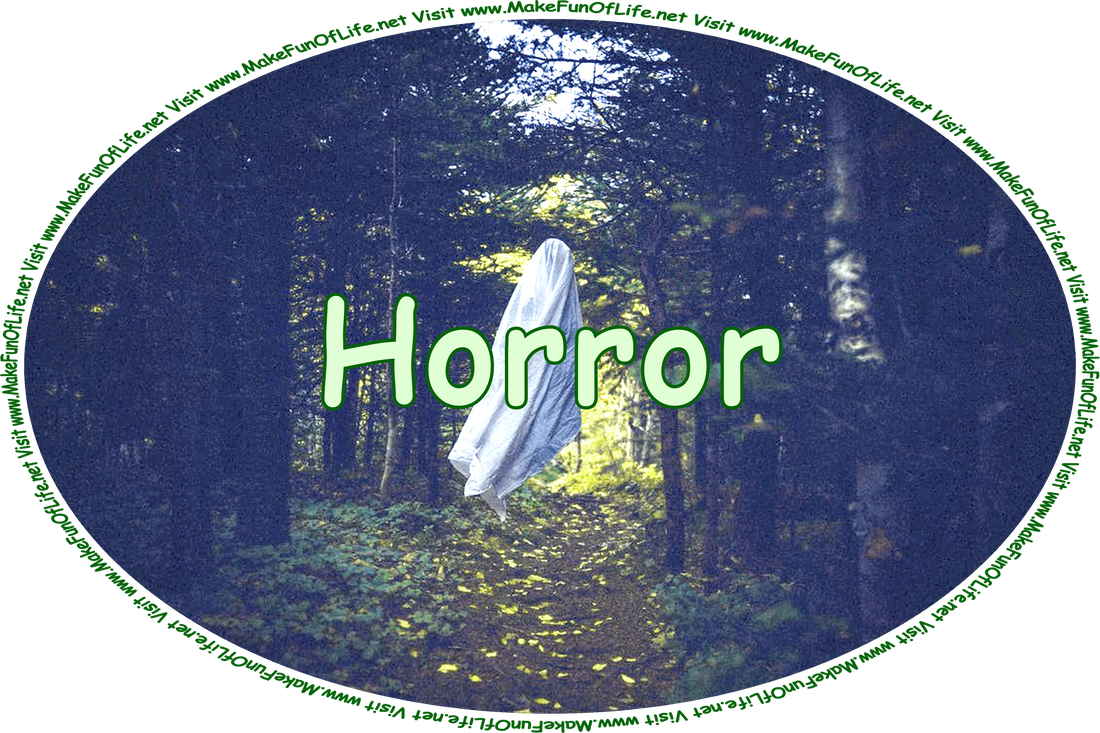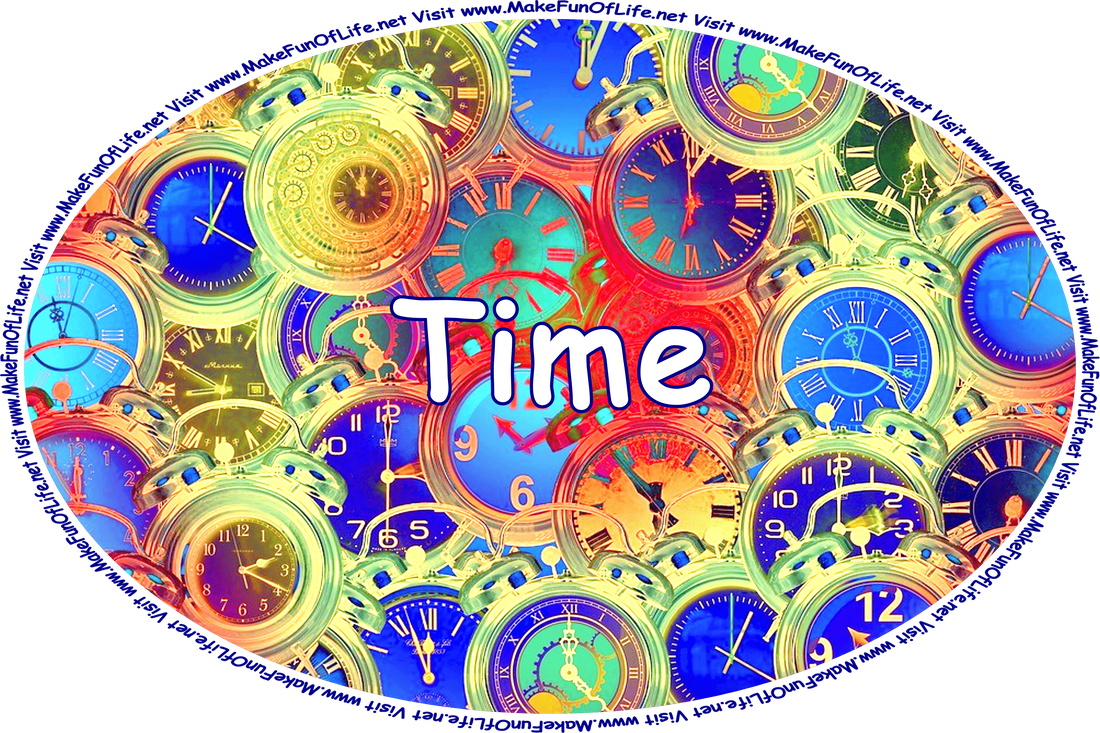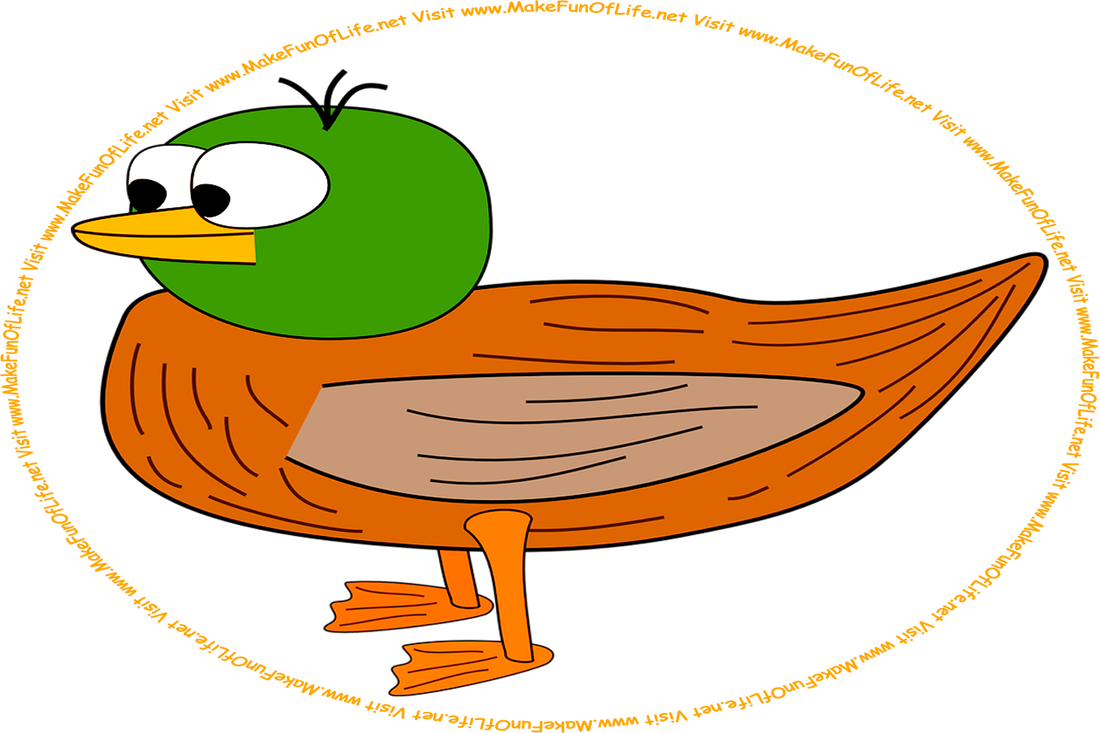“We can’t all be stars, but we can all sparkle.” -Author Unknown
What are stars? Stars are massive spheres, or balls, of very hot burning gases, called plasma, held together by their own gravity. Most stars contain mostly hydrogen, with small amounts of helium. Some stars have tiny amounts of other elements as well.
“At night, an enormous blanket is placed over the Earth to keep it warm. The blanket is very old and worn out, and so it has many tiny holes in it. The holes where the Sun’s light comes through are called stars.” -David Hugh Beaumont (born 1966)
Continue scrolling down this website page to read the rest of the article, or click or tap on these words to read “Beaumont’s Quotations” by David Hugh Beaumont.
Stars form in nebulas, which are large gaseous areas of space. As gravity attracts and condenses more and more gas into clusters, young stars called protostars start to form.
“It is not in the stars to hold our destiny but in ourselves.” -William Shakespeare (1564 - 1616)
Continue scrolling down this website page to read the rest of the article, or click or tap on these words to read “Humor And Inspiration And Learning About Personal Destiny” Gathered By David Hugh Beaumont.
Stars radiate energy created from nuclear fusion, which is a process that takes place in a star’s core and involves hydrogen fusing, or burning, to make helium. Once nuclear fusion has begun in the core, a star is sufficiently fueled to spend the majority of its life as a main sequence star, or twinkly thing, in its most stable form.
The Star
Twinkle, twinkle, little star,
How I wonder what you are.
Giant thermonuclear reaction,
Held by gravitational attraction.
Twinkle, twinkle, little star,
You look small ’cause you’re so far.
As you burn through constant fusion,
Your twinkle’s just an optical illusion
That happens when your light gets near,
Distorted by our atmosphere.
Twinkle, twinkle, little star,
Spreading light and heat so far.
As you use up fuel you’ll grow,
And give off a scarlet glow.
Maybe you’ll go supernova
Exploding elements all over.
Now I know just what you are,
And I know I’m made of stars.
by Author Unknown: parody of “The Star” by Jane Taylor (1806) poem
Continue scrolling down this website page to read the rest of the article, or click or tap on these words to read “The Star” by Jane Taylor.
“Even a small star shines in the darkness.” -Author Unknown: Finnish proverb
A brown dwarf forms if a star does not become hot enough to reach nuclear fusion. While a brown dwarf has failed to become a proper star, it is not a planet because it does glow dimly.
“There are stars called white dwarfs and red giants . . . but, alas, no jelly donuts.” -Author Unknown
Continue scrolling down this website page to read the rest of the article, or click or tap on these words to read “Fun and Learning about Doughnuts and Donuts” gathered by David Hugh Beaumont.
The most common stars are red dwarfs. They are less than half the size and mass of our Sun, and burn their fuel very slowly. Red dwarfs last longer than any other type of star, at more than 100 billion years. They are cooler than most stars, and so shine less, eventually growing dimmer.
“We are made of stardust. Every atom of every element in your body except for hydrogen has been manufactured inside stars, scattered across the Universe in great stellar explosions, and recycled to become part of you.” -John Gribbin (John R. Gribbin (born 1946)): “Stardust” (10 September 2000)
Continue scrolling down this website page to read the rest of the article, or click or tap on these words to read “Fun and Learning about Humans and Human Nature” gathered by David Hugh Beaumont.
When smaller stars such as red dwarfs or red giants use up all of their fuel and nuclear fusion slows, they start to fade, and become small white dwarf stars, which emit white light until they finally darken into black dwarfs.
“All men have stars, but they are not the same things for different people. For some, who are travelers, the stars are guides. For others they are no more than little lights in the sky. For others, who are scholars, they are problems . . . But all these stars are silent. You - you alone, will have stars as no one else has them . . .” -Antoine de Saint-Exupéry (Antoine Marie Jean-Baptiste Roger, comte de Saint-Exupéry (1900 - 1944))
Continue scrolling down this website page to read the rest of the article, or click or tap on these words to read “Fun and Learning about Differences and Individuality” gathered by David Hugh Beaumont.
A dwarf star is so dense that it would take eight people to lift a teaspoonful of its matter. As yellow dwarf stars like our Sun start to run out of hydrogen fuel, the core shrinks, heats, and pushes out the rest of the star, turning it into a red giant.
Wish Upon a Star
Star light, star bright,
The first star I see tonight,
I wish I may, I wish I might,
Have this wish I wish tonight.
by Author Unknown
Continue scrolling down this website page to read the rest of the article, or click or tap on these words to read “Fun and Learning about Poetic Epigrams” gathered by David Hugh Beaumont.
Red supergiants, such as Betelgeuse in the constellation Orion, make our Sun look small, having 20 times its mass, and being 1,000 times bigger in size. Red hypergiants, such as the largest known star, VY Canis Majoris, are even bigger, at more than 1,800 times the size of our Sun.
What are stars? Stars are massive spheres, or balls, of very hot burning gases, called plasma, held together by their own gravity. Most stars contain mostly hydrogen, with small amounts of helium. Some stars have tiny amounts of other elements as well.
“At night, an enormous blanket is placed over the Earth to keep it warm. The blanket is very old and worn out, and so it has many tiny holes in it. The holes where the Sun’s light comes through are called stars.” -David Hugh Beaumont (born 1966)
Continue scrolling down this website page to read the rest of the article, or click or tap on these words to read “Beaumont’s Quotations” by David Hugh Beaumont.
Stars form in nebulas, which are large gaseous areas of space. As gravity attracts and condenses more and more gas into clusters, young stars called protostars start to form.
“It is not in the stars to hold our destiny but in ourselves.” -William Shakespeare (1564 - 1616)
Continue scrolling down this website page to read the rest of the article, or click or tap on these words to read “Humor And Inspiration And Learning About Personal Destiny” Gathered By David Hugh Beaumont.
Stars radiate energy created from nuclear fusion, which is a process that takes place in a star’s core and involves hydrogen fusing, or burning, to make helium. Once nuclear fusion has begun in the core, a star is sufficiently fueled to spend the majority of its life as a main sequence star, or twinkly thing, in its most stable form.
The Star
Twinkle, twinkle, little star,
How I wonder what you are.
Giant thermonuclear reaction,
Held by gravitational attraction.
Twinkle, twinkle, little star,
You look small ’cause you’re so far.
As you burn through constant fusion,
Your twinkle’s just an optical illusion
That happens when your light gets near,
Distorted by our atmosphere.
Twinkle, twinkle, little star,
Spreading light and heat so far.
As you use up fuel you’ll grow,
And give off a scarlet glow.
Maybe you’ll go supernova
Exploding elements all over.
Now I know just what you are,
And I know I’m made of stars.
by Author Unknown: parody of “The Star” by Jane Taylor (1806) poem
Continue scrolling down this website page to read the rest of the article, or click or tap on these words to read “The Star” by Jane Taylor.
“Even a small star shines in the darkness.” -Author Unknown: Finnish proverb
A brown dwarf forms if a star does not become hot enough to reach nuclear fusion. While a brown dwarf has failed to become a proper star, it is not a planet because it does glow dimly.
“There are stars called white dwarfs and red giants . . . but, alas, no jelly donuts.” -Author Unknown
Continue scrolling down this website page to read the rest of the article, or click or tap on these words to read “Fun and Learning about Doughnuts and Donuts” gathered by David Hugh Beaumont.
The most common stars are red dwarfs. They are less than half the size and mass of our Sun, and burn their fuel very slowly. Red dwarfs last longer than any other type of star, at more than 100 billion years. They are cooler than most stars, and so shine less, eventually growing dimmer.
“We are made of stardust. Every atom of every element in your body except for hydrogen has been manufactured inside stars, scattered across the Universe in great stellar explosions, and recycled to become part of you.” -John Gribbin (John R. Gribbin (born 1946)): “Stardust” (10 September 2000)
Continue scrolling down this website page to read the rest of the article, or click or tap on these words to read “Fun and Learning about Humans and Human Nature” gathered by David Hugh Beaumont.
When smaller stars such as red dwarfs or red giants use up all of their fuel and nuclear fusion slows, they start to fade, and become small white dwarf stars, which emit white light until they finally darken into black dwarfs.
“All men have stars, but they are not the same things for different people. For some, who are travelers, the stars are guides. For others they are no more than little lights in the sky. For others, who are scholars, they are problems . . . But all these stars are silent. You - you alone, will have stars as no one else has them . . .” -Antoine de Saint-Exupéry (Antoine Marie Jean-Baptiste Roger, comte de Saint-Exupéry (1900 - 1944))
Continue scrolling down this website page to read the rest of the article, or click or tap on these words to read “Fun and Learning about Differences and Individuality” gathered by David Hugh Beaumont.
A dwarf star is so dense that it would take eight people to lift a teaspoonful of its matter. As yellow dwarf stars like our Sun start to run out of hydrogen fuel, the core shrinks, heats, and pushes out the rest of the star, turning it into a red giant.
Wish Upon a Star
Star light, star bright,
The first star I see tonight,
I wish I may, I wish I might,
Have this wish I wish tonight.
by Author Unknown
Continue scrolling down this website page to read the rest of the article, or click or tap on these words to read “Fun and Learning about Poetic Epigrams” gathered by David Hugh Beaumont.
Red supergiants, such as Betelgeuse in the constellation Orion, make our Sun look small, having 20 times its mass, and being 1,000 times bigger in size. Red hypergiants, such as the largest known star, VY Canis Majoris, are even bigger, at more than 1,800 times the size of our Sun.
“It is often in the darkest skies that we see the brightest stars.” -Author Unknown
Continue scrolling down this website page to read the rest of the article, or click or tap on these words to read “Humor and Inspiration and Learning about Hopes And Dreams” gathered by David Hugh Beaumont.
Big stars like supergiants and hypergiants have shorter lives because they consume their fuel at a faster rate than smaller stars. As these massive stars fade, they explode into massive bright supernovas.
“Tell a man that there are 400 billion stars and he’ll believe you. Tell him a bench has wet paint and he has to touch it.” -Author Unknown
Continue scrolling down this website page to read the rest of the article, or click or tap on these words to read “Humor And Inspiration And Learning About Inquisitiveness And Curiosity” Gathered By David Hugh Beaumont.
Star matter blown apart in supernova explosions forms new stellar nebulas (or nebulae), and the process of making stars begins all over again.
“Supposing you only saw the stars once a year. Think what you would think. The wonder of it!” -Tasha Tudor (born Starling Burgess, possibly later known as Natasha Burgess (1915 - 2008)) at https://tashatudorandfamily.com/
Continue scrolling down this website page to read the rest of the article, or click or tap on these words to read “Fun and Learning about Apathy and Enthusiasm” gathered by David Hugh Beaumont.
Very heavy stars that go supernova can actually turn into black holes, while other supernovas leave behind white neutron stars that are 20 to 40 kilometers (12.5 to 25 miles) in diameter and have dense cores made of neutrons.
Riddle: I shine high in the sky - what am I?
Solution: I am a star.
Continue scrolling down this website page to read the rest of the article, or click or tap on these words to read “Fun and Learning about Riddles and Puzzles” gathered by David Hugh Beaumont.
As a star approaches the end of its existence, the helium in it begins to change into heavier chemical elements, such as carbon and oxygen, and the star will begin to change its color, density, mass, and size.
Continue scrolling down this website page to read the rest of the article, or click or tap on these words to read “Fun and Learning about Changing and Adjusting” gathered by David Hugh Beaumont.
“A high-school girl, seated next to a famous astronomer at a dinner party, struck up a conversation with him by asking: ‘What do you do for a living?’ ‘I study astronomy,’ he replied. ‘Really?’ said the teenager, wide-eyed. ‘I finished astronomy last year.’” -James Keller
Continue scrolling down this website page to read the rest of the article, or click or tap on these words to read “Fun and Learning about Employment and Work” gathered by David Hugh Beaumont.
An ancient astronomer stayed up all night trying to figure out where the Sun had gone. In the morning, it finally dawned on him.
What do astronomers do during the daytime?
Continue scrolling down this website page to read the rest of the article, or click or tap on these words to read “Fun And Learning About Questions And Queries” Gathered By David Hugh Beaumont.
Stars range in color depending on how hot they are. In order from lowest to highest temperature, they can be brown, red, orange, yellow, white, or blue in color.
“Stars have always helped me to get things into perspective . . . I tried to let the starlight heal something deep in me that hurt.” -Madeleine L’Engle (Madeleine L’Engle Camp (1918 - 2007))
Continue scrolling down this website page to read the rest of the article, or click or tap on these words to read “Words Heal” gathered by David Hugh Beaumont.
Stars are often between 1 and 10 billion years old. Some stars may even be close to the age of the observed Universe, at nearly 13.8 billion years old.
“A million stars in the sky . . . and they all sparkle. No matter how great the number of those you find yourself among, you can still stand out. You as an individual matter.” -David Hugh Beaumont (born 1966)
There are more stars in the Universe than there are grains of sand on all the beaches of the world. We know this because we have been traveling the world’s beaches with a pencil, a notebook, and a magnifying glass, counting all of the itsy-bitsy granules of sand . . . if you see us out there, be sure to say hello!
Continue scrolling down this website page to read the rest of the article, or click or tap on these words to read “Fun and Learning about Numbers and Counting” gathered by David Hugh Beaumont.
Stars
The stars are tiny daisies high,
Opening and shutting in the sky.
The daisies are the stars below,
Twinkling and sparkling as they grow.
by Authors Unknown
Continue scrolling down this website page to read the rest of the article, or click or tap on these words to read “Humor And Inspiration And Learning About Flowering Plants And Flowers” Gathered By David Hugh Beaumont.
Each galaxy contains hundreds of billions of stars and there are estimated to be more than 100 billion galaxies in the Universe. The total number of stars in the Universe is mind boggling, estimated to be at least 70 sextillion and possibly as high as 300 sextillion, which is 300,000,000,000,000,000,000,000.
“Put three grains of sand inside a vast cathedral, and the cathedral will be more closely packed with sand than space is with stars.” -James Jeans (James Hopwood Jeans (1877 - 1946)): as attributed in Laurence J. Peter’s “Peter’s Quotations: Ideas for Our Time” (1993)
Continue scrolling down this website page to read the rest of the article, or click or tap on these words to read “Humor and Inspiration and Learning about Hopes And Dreams” gathered by David Hugh Beaumont.
Big stars like supergiants and hypergiants have shorter lives because they consume their fuel at a faster rate than smaller stars. As these massive stars fade, they explode into massive bright supernovas.
“Tell a man that there are 400 billion stars and he’ll believe you. Tell him a bench has wet paint and he has to touch it.” -Author Unknown
Continue scrolling down this website page to read the rest of the article, or click or tap on these words to read “Humor And Inspiration And Learning About Inquisitiveness And Curiosity” Gathered By David Hugh Beaumont.
Star matter blown apart in supernova explosions forms new stellar nebulas (or nebulae), and the process of making stars begins all over again.
“Supposing you only saw the stars once a year. Think what you would think. The wonder of it!” -Tasha Tudor (born Starling Burgess, possibly later known as Natasha Burgess (1915 - 2008)) at https://tashatudorandfamily.com/
Continue scrolling down this website page to read the rest of the article, or click or tap on these words to read “Fun and Learning about Apathy and Enthusiasm” gathered by David Hugh Beaumont.
Very heavy stars that go supernova can actually turn into black holes, while other supernovas leave behind white neutron stars that are 20 to 40 kilometers (12.5 to 25 miles) in diameter and have dense cores made of neutrons.
Riddle: I shine high in the sky - what am I?
Solution: I am a star.
Continue scrolling down this website page to read the rest of the article, or click or tap on these words to read “Fun and Learning about Riddles and Puzzles” gathered by David Hugh Beaumont.
As a star approaches the end of its existence, the helium in it begins to change into heavier chemical elements, such as carbon and oxygen, and the star will begin to change its color, density, mass, and size.
Continue scrolling down this website page to read the rest of the article, or click or tap on these words to read “Fun and Learning about Changing and Adjusting” gathered by David Hugh Beaumont.
“A high-school girl, seated next to a famous astronomer at a dinner party, struck up a conversation with him by asking: ‘What do you do for a living?’ ‘I study astronomy,’ he replied. ‘Really?’ said the teenager, wide-eyed. ‘I finished astronomy last year.’” -James Keller
Continue scrolling down this website page to read the rest of the article, or click or tap on these words to read “Fun and Learning about Employment and Work” gathered by David Hugh Beaumont.
An ancient astronomer stayed up all night trying to figure out where the Sun had gone. In the morning, it finally dawned on him.
What do astronomers do during the daytime?
Continue scrolling down this website page to read the rest of the article, or click or tap on these words to read “Fun And Learning About Questions And Queries” Gathered By David Hugh Beaumont.
Stars range in color depending on how hot they are. In order from lowest to highest temperature, they can be brown, red, orange, yellow, white, or blue in color.
“Stars have always helped me to get things into perspective . . . I tried to let the starlight heal something deep in me that hurt.” -Madeleine L’Engle (Madeleine L’Engle Camp (1918 - 2007))
Continue scrolling down this website page to read the rest of the article, or click or tap on these words to read “Words Heal” gathered by David Hugh Beaumont.
Stars are often between 1 and 10 billion years old. Some stars may even be close to the age of the observed Universe, at nearly 13.8 billion years old.
“A million stars in the sky . . . and they all sparkle. No matter how great the number of those you find yourself among, you can still stand out. You as an individual matter.” -David Hugh Beaumont (born 1966)
There are more stars in the Universe than there are grains of sand on all the beaches of the world. We know this because we have been traveling the world’s beaches with a pencil, a notebook, and a magnifying glass, counting all of the itsy-bitsy granules of sand . . . if you see us out there, be sure to say hello!
Continue scrolling down this website page to read the rest of the article, or click or tap on these words to read “Fun and Learning about Numbers and Counting” gathered by David Hugh Beaumont.
Stars
The stars are tiny daisies high,
Opening and shutting in the sky.
The daisies are the stars below,
Twinkling and sparkling as they grow.
by Authors Unknown
Continue scrolling down this website page to read the rest of the article, or click or tap on these words to read “Humor And Inspiration And Learning About Flowering Plants And Flowers” Gathered By David Hugh Beaumont.
Each galaxy contains hundreds of billions of stars and there are estimated to be more than 100 billion galaxies in the Universe. The total number of stars in the Universe is mind boggling, estimated to be at least 70 sextillion and possibly as high as 300 sextillion, which is 300,000,000,000,000,000,000,000.
“Put three grains of sand inside a vast cathedral, and the cathedral will be more closely packed with sand than space is with stars.” -James Jeans (James Hopwood Jeans (1877 - 1946)): as attributed in Laurence J. Peter’s “Peter’s Quotations: Ideas for Our Time” (1993)
Our Milky Way Galaxy is an area in space crowded with lots of stars - so many that it resembles a road of spilled milk. That is how it got its name. There are estimated to be somewhere between 200 and 400 billion stars in the Milky Way.
Galaxies are speeding away from Earth at 90,000 miles per second. What do you suppose they know that we don’t?
Continue scrolling down this website page to read the rest of the article, or click or tap on these words to read “Fun and Learning about Environmentalism and Animal Rights” gathered by David Hugh Beaumont.
The light emitted by 200,000 galaxies makes our Universe a shade of beige. Scientists call this color ‘cosmic latte.’ Of course, if a scientist is up late at night looking at stars, it might be because that person is highly caffeinated.
“There they stand, the innumerable stars, shining in order like a living hymn, written in light.” -Nathaniel Parker Willis (1806 - 1867)
The light from stars takes millions of years to reach Earth, so when you look at the stars, you are literally looking back in time.
“The stars are not so strange as the mind that studies them, analyzes their light, and measures their distances.” -Harry Emerson Fosdick (1878 - 1969): “On Being a Real Person” (1943)
“All finite things have their roots in the infinite, and if you wish to understand life at all, you cannot tear out its context. And that context, astounding even to bodily eyes, is the Heaven of stars and the incredible procession of the great galaxies.” -W. MacNeile Dixon (William MacNeile Dixon (1866 - 1946))
While a clear night sky may appear to be full of stars, there are really only about 2,000 to 3,000 stars visible to the unaided eye, meaning without the use of a telescope. These stars are all either close to the Earth or intensely luminous, meaning very bright, like yourself.
Visiting an observatory, the backwoods man watched the astronomer look through his telescope. Just then a star fell. “Wow-wee!” exclaimed the man. “You sure are a great shot!”
Stars only appear to twinkle because we see them through the Earth’s atmosphere. Stars shine in an unblinking steady state, but atmospheric disturbances called eddies, which we experience as slight breezes and winds, make stars look sparkly.
If you get into the bottom of a well or a tall chimney and look up, you can see stars, even in the middle of the day. We know this because we spend a lot of time hanging out at the bottom of old wells and chimneys.
At an average distance of just 149,597,870 kilometers (92,955,807 miles), the nearest star to Earth is a yellow dwarf star called the Sun. The next nearest star to Earth is a red dwarf star called Proxima Centauri, also known as Alpha Centauri C. It was discovered in 1915 by Scottish astronomer Robert Innes while he was working at the Union Observatory in Johannesburg, South Africa. It is about 39.9 trillion kilometers (24.79 trillion miles) or 4.25 light years away. Light from this star reaches Earth in 4.25 years. A spacecraft using the newest, fastest propulsion systems would take about 75,000 years to get there.
Arnold: Did you know there’s a star called the Dog Star?
Owen: Are you Sirius?
Binary stars and multi-star systems are made up of two or more stars that are gravitationally linked, so that they orbit around each other.
“There wouldn’t be a sky full of stars if we were all meant to wish on the same one.” -Frances Clark (Frances Mary Clark (1860 - 1958))
Continue scrolling down this website page to read the rest of the article, or click or tap on these words to read “Fun and Learning about Wishes and Wishing” gathered by David Hugh Beaumont.
A comet is a relatively small solar system body that orbits the Sun. When close enough to the Sun, comets display a visible coma, which is a fuzzy outline or atmosphere due to solar radiation, and sometimes also a tail.
When asked about flying saucers, the astronomer replied, “No comet.”
Continue scrolling down this website page to read the rest of the article, or click or tap on these words to read “Fun and Learning about UFO’s and Extraterrestrials” gathered by David Hugh Beaumont.
Asteroids are small solar system bodies that orbit the Sun. Made of rock and metal, they can also contain organic compounds. Asteroids are similar to comets but do not have a visible coma (fuzzy outline and tail) like comets do.
“Telescope: A device for bringing the sky closer.” -David Hugh Beaumont (born 1966)
Continue scrolling down this website page to read the rest of the article, or click or tap on these words to read “Fun and Learning about Daffynitions and Definitions” gathered by David Hugh Beaumont.
A meteoroid is a small rock or particle of debris in our solar system. They range in size from dust to about 10 meters in diameter. Larger objects are usually referred to as asteroids.
Star
Star light, star bright,
First star I see tonight,
I wish I may, I wish I might,
No - it’s just a satellite!
by Author Unknown
So-called ‘shooting stars’ and ‘falling stars’ are not actually stars, but are meteors. A meteoroid that burns up as it passes through the Earth’s atmosphere is known as a meteor. A meteoroid that survives falling through the Earth’s atmosphere and colliding with the Earth’s surface is known as a meteorite.
The odds of anyone being struck by a meteorite are said to be ‘astronomical.’
Stars have played important roles throughout human history. They feature in belief systems, have been grouped into constellations, are used in astrology, have helped in the designing of calendars, and were important navigational tools for early explorations across lands and seas.
Continue scrolling down this website page to read the rest of the article, or click or tap on these words to visit “Fun and Learning about History” gathered by David Hugh Beaumont.
Silently, one by one, in the infinite meadows of Heaven,
Blossomed the lovely stars, the forget-me-nots of the angels.
-Henry Wadsworth Longfellow (1807 - 1882): “Evangeline: A Tale of Acadie” (1847), Part the First, III
If you would like to keep up-to-date on the goings on in a whole Universe of stars, visit www.StarDate.org.
Reach high, for stars lie hidden in your soul.
Dream deep, for every dream precedes the goal.
-Pamela Vaull Starr (pseudonym of Violet Isabelle (Carter) Popp (1909 - 1993))
Continue scrolling down this website page to read the rest of the article, or click or tap on these words to read “Fun and Learning about Inspiration and Motivation” gathered by David Hugh Beaumont.
At MFOL! we think stars are, like, so stellar . . . and far out, too . . . now go have fun with your life!
Galaxies are speeding away from Earth at 90,000 miles per second. What do you suppose they know that we don’t?
Continue scrolling down this website page to read the rest of the article, or click or tap on these words to read “Fun and Learning about Environmentalism and Animal Rights” gathered by David Hugh Beaumont.
The light emitted by 200,000 galaxies makes our Universe a shade of beige. Scientists call this color ‘cosmic latte.’ Of course, if a scientist is up late at night looking at stars, it might be because that person is highly caffeinated.
“There they stand, the innumerable stars, shining in order like a living hymn, written in light.” -Nathaniel Parker Willis (1806 - 1867)
The light from stars takes millions of years to reach Earth, so when you look at the stars, you are literally looking back in time.
“The stars are not so strange as the mind that studies them, analyzes their light, and measures their distances.” -Harry Emerson Fosdick (1878 - 1969): “On Being a Real Person” (1943)
“All finite things have their roots in the infinite, and if you wish to understand life at all, you cannot tear out its context. And that context, astounding even to bodily eyes, is the Heaven of stars and the incredible procession of the great galaxies.” -W. MacNeile Dixon (William MacNeile Dixon (1866 - 1946))
While a clear night sky may appear to be full of stars, there are really only about 2,000 to 3,000 stars visible to the unaided eye, meaning without the use of a telescope. These stars are all either close to the Earth or intensely luminous, meaning very bright, like yourself.
Visiting an observatory, the backwoods man watched the astronomer look through his telescope. Just then a star fell. “Wow-wee!” exclaimed the man. “You sure are a great shot!”
Stars only appear to twinkle because we see them through the Earth’s atmosphere. Stars shine in an unblinking steady state, but atmospheric disturbances called eddies, which we experience as slight breezes and winds, make stars look sparkly.
If you get into the bottom of a well or a tall chimney and look up, you can see stars, even in the middle of the day. We know this because we spend a lot of time hanging out at the bottom of old wells and chimneys.
At an average distance of just 149,597,870 kilometers (92,955,807 miles), the nearest star to Earth is a yellow dwarf star called the Sun. The next nearest star to Earth is a red dwarf star called Proxima Centauri, also known as Alpha Centauri C. It was discovered in 1915 by Scottish astronomer Robert Innes while he was working at the Union Observatory in Johannesburg, South Africa. It is about 39.9 trillion kilometers (24.79 trillion miles) or 4.25 light years away. Light from this star reaches Earth in 4.25 years. A spacecraft using the newest, fastest propulsion systems would take about 75,000 years to get there.
Arnold: Did you know there’s a star called the Dog Star?
Owen: Are you Sirius?
Binary stars and multi-star systems are made up of two or more stars that are gravitationally linked, so that they orbit around each other.
“There wouldn’t be a sky full of stars if we were all meant to wish on the same one.” -Frances Clark (Frances Mary Clark (1860 - 1958))
Continue scrolling down this website page to read the rest of the article, or click or tap on these words to read “Fun and Learning about Wishes and Wishing” gathered by David Hugh Beaumont.
A comet is a relatively small solar system body that orbits the Sun. When close enough to the Sun, comets display a visible coma, which is a fuzzy outline or atmosphere due to solar radiation, and sometimes also a tail.
When asked about flying saucers, the astronomer replied, “No comet.”
Continue scrolling down this website page to read the rest of the article, or click or tap on these words to read “Fun and Learning about UFO’s and Extraterrestrials” gathered by David Hugh Beaumont.
Asteroids are small solar system bodies that orbit the Sun. Made of rock and metal, they can also contain organic compounds. Asteroids are similar to comets but do not have a visible coma (fuzzy outline and tail) like comets do.
“Telescope: A device for bringing the sky closer.” -David Hugh Beaumont (born 1966)
Continue scrolling down this website page to read the rest of the article, or click or tap on these words to read “Fun and Learning about Daffynitions and Definitions” gathered by David Hugh Beaumont.
A meteoroid is a small rock or particle of debris in our solar system. They range in size from dust to about 10 meters in diameter. Larger objects are usually referred to as asteroids.
Star
Star light, star bright,
First star I see tonight,
I wish I may, I wish I might,
No - it’s just a satellite!
by Author Unknown
So-called ‘shooting stars’ and ‘falling stars’ are not actually stars, but are meteors. A meteoroid that burns up as it passes through the Earth’s atmosphere is known as a meteor. A meteoroid that survives falling through the Earth’s atmosphere and colliding with the Earth’s surface is known as a meteorite.
The odds of anyone being struck by a meteorite are said to be ‘astronomical.’
Stars have played important roles throughout human history. They feature in belief systems, have been grouped into constellations, are used in astrology, have helped in the designing of calendars, and were important navigational tools for early explorations across lands and seas.
Continue scrolling down this website page to read the rest of the article, or click or tap on these words to visit “Fun and Learning about History” gathered by David Hugh Beaumont.
Silently, one by one, in the infinite meadows of Heaven,
Blossomed the lovely stars, the forget-me-nots of the angels.
-Henry Wadsworth Longfellow (1807 - 1882): “Evangeline: A Tale of Acadie” (1847), Part the First, III
If you would like to keep up-to-date on the goings on in a whole Universe of stars, visit www.StarDate.org.
Reach high, for stars lie hidden in your soul.
Dream deep, for every dream precedes the goal.
-Pamela Vaull Starr (pseudonym of Violet Isabelle (Carter) Popp (1909 - 1993))
Continue scrolling down this website page to read the rest of the article, or click or tap on these words to read “Fun and Learning about Inspiration and Motivation” gathered by David Hugh Beaumont.
At MFOL! we think stars are, like, so stellar . . . and far out, too . . . now go have fun with your life!






































































































































































































































































































































































































